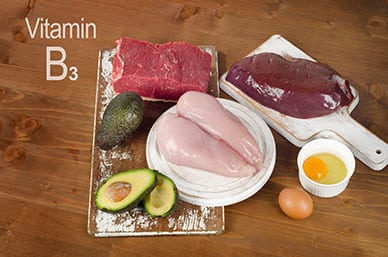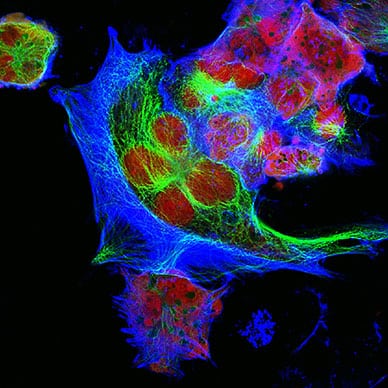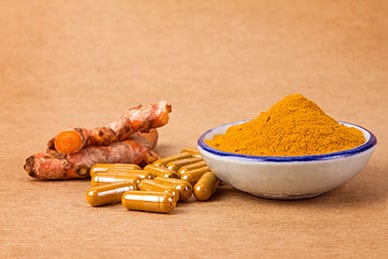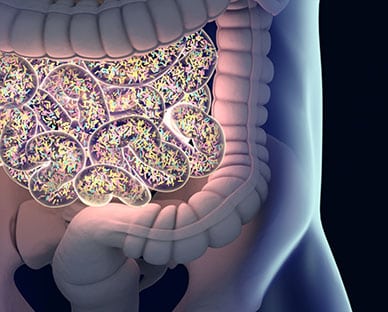Lutein, a carotenoid found in fruits and vegetables, has long been associated with eye health. A new study conducted at the University of Illinois at Urbana-Champaign has found that this nutrient may also help slow cognitive decline. This pigment or carotenoid may play an important role in the development and maintenance of brain function while improving memory and learning. The link between lutein and cognitive aging may be important in future dementia research and offer adults another way to stay sharp mentally.
What is Lutein?
 Lutein is one of 600 carotenoids that’s often called the “eye vitamin” for its use in the prevention of eye diseases. This antioxidant is responsible for giving vegetables and fruits their yellow color. Lutein can only be obtained through diet and supplements; it isn’t produced by the human body.
Lutein is one of 600 carotenoids that’s often called the “eye vitamin” for its use in the prevention of eye diseases. This antioxidant is responsible for giving vegetables and fruits their yellow color. Lutein can only be obtained through diet and supplements; it isn’t produced by the human body.
Lutein is most known for its benefits for eye health, especially when it comes to age-related macular degeneration and cataracts. The eye contains lutein and zeaxanthin in levels much higher than other tissue in the human body. Both the retina and lens of the eye are exposed to oxygen and light constantly, and these carotenoids work to reduce damage from oxygen and light.
The natural lens of the eye collects and focuses light on the retina which requires a clear lens. The most common cause of cataracts is oxidation, which results in clouding. Lutein and other antioxidants work to neutralize free radicals associated with oxidation and retinal damage. Higher intake of zeaxanthin and lutein has been associated with a much lower risk of developing cataracts.
Lutein also helps reduce the risk of age-related macular degeneration, a disease that causes progressive vision loss. According to one study, taking just 6 mg of lutein per day lowers the risk of macular degeneration by 43 percent.
Lutein and Cognitive Aging: What’s the Link?
A new study conducted by University of Illinois researchers examined the levels of lutein in 60 adults between 25 and 45 years old. According to researchers, the middle-aged study participants with higher lutein levels had neural responses similar to those of younger participants than with peers.
This study, published in Frontiers in Aging Neuroscience, is different than most studies that focus on older adults who have already started to experience cognitive decline. The researchers chose to focus on young and middle-aged participants to see if there was a difference based on lutein levels. The study also found that age-related cognitive decline begins earlier than many suspected with signs beginning in the 30s.
To study lutein levels, the researchers measured lutein in the eyes of the participants by having them look into a scope and responding to a flickering light. Electrodes were used on the scalp to measure neural activity while participants completed a task requiring attention.
Researchers didn’t examine how lutein works, although past studies have indicated that lutein offers anti-inflammatory properties that improve brain function. It appears that lutein offers protection for the brain.
The next step for the team is to conduct intervention trials to investigate how increasing consumption of lutein increases lutein levels in the eyes and whether it improves cognitive function.
Other Cognitive Benefits of Lutein
 This is not the first study involving lutein and cognitive aging. Another study, published in the Journals of Gerontology, found that higher lutein intake is associated with a lower risk of dementia. This study, published in 2016, examined the relationship between plasma carotenoids like lutein and Alzheimer’s disease and dementia. The study began with 1,092 older participants with no signs of dementia. During the 10-year follow-up, 199 cases of Alzheimer’s and dementia were diagnosed. After adjusting for socioeconomic status, diet quality, and other variables, only higher lutein levels were significantly associated with a lower risk of Alzheimer’s and dementia.
This is not the first study involving lutein and cognitive aging. Another study, published in the Journals of Gerontology, found that higher lutein intake is associated with a lower risk of dementia. This study, published in 2016, examined the relationship between plasma carotenoids like lutein and Alzheimer’s disease and dementia. The study began with 1,092 older participants with no signs of dementia. During the 10-year follow-up, 199 cases of Alzheimer’s and dementia were diagnosed. After adjusting for socioeconomic status, diet quality, and other variables, only higher lutein levels were significantly associated with a lower risk of Alzheimer’s and dementia.
Research has also suggested that as babies receive more lutein from formula or breast milk, they have higher levels of lutein found in their brains. This may speed up cognitive milestones. Children in school may have higher test scores with a diet higher in lutein. The benefits can also continue throughout life as college students with higher levels of lutein seem to have better memory and mental sharpness.
Getting Enough Lutein Through Diet and Supplementation
According to the American Optometric Association, most Western diets are low in lutein. Lutein, as well as the related carotenoid zeaxanthin, are found in leafy green vegetables like spinach and some other foods like eggs. Good sources of lutein and zeaxanthin include:
- kale: 1 cup cooked has 23.8 mg
- spinach: 1 cup cooked has 20.4 mg
- collards: 1 cup cooked has 14.6 mg
- spinach: 1 cup raw has 3.8 mg
- green peas: 1 cup has 2.2 mg
- broccoli: 1 cup cooked has 1.6 mg
- eggs: 1 large eggs have 0.3 mg
Lutein is also available alone in soft-gel capsule form or as a part of some natural supplement formulas. When taken as a supplement, lutein should be taken at mealtime as it’s absorbed best when ingested with some fat. A dose of 6 mg to 30 mg per day is recommended.
 The study began by focusing on families with a condition called VACTERL in which people are born with three or more rare congenital defects. The researchers found that NAD deficiency negatively affected the formation of embryos in people exhibiting VACTERL, causing birth defects or miscarriage, but 12 years of research found that NAD deficiency may also be to blame for other cases of congenital defects and miscarriage.
The study began by focusing on families with a condition called VACTERL in which people are born with three or more rare congenital defects. The researchers found that NAD deficiency negatively affected the formation of embryos in people exhibiting VACTERL, causing birth defects or miscarriage, but 12 years of research found that NAD deficiency may also be to blame for other cases of congenital defects and miscarriage. A new study published in
A new study published in  In addition to acting directly on tumor cells in laboratory settings, curcumin is a powerful antioxidant that can protect against free radicals in the body that cause cell damage. It has also been found to help maintain healthy levels of two enzymes that cause inflammation while also promoting healthy blood flow.
In addition to acting directly on tumor cells in laboratory settings, curcumin is a powerful antioxidant that can protect against free radicals in the body that cause cell damage. It has also been found to help maintain healthy levels of two enzymes that cause inflammation while also promoting healthy blood flow. These are not the only studies published this year on fruit flies and gut bacteria. Another study, published in
These are not the only studies published this year on fruit flies and gut bacteria. Another study, published in  It is well known that it is important to get a wide range of vitamins as part of
It is well known that it is important to get a wide range of vitamins as part of  Although vitamin D is one of the most important nutrients for human health, many modern people are deficient. This vitamin is produced mainly through a reaction found in skin cells when they are exposed to ultraviolet light. Many people in the modern world wear sunscreen to lower their skin cancer risk,
Although vitamin D is one of the most important nutrients for human health, many modern people are deficient. This vitamin is produced mainly through a reaction found in skin cells when they are exposed to ultraviolet light. Many people in the modern world wear sunscreen to lower their skin cancer risk,  While people in the West are less susceptible to communicable diseases and infections than ever before, several other diseases are increasing at an alarming rate. Heart disease is one of these illnesses. A great deal of heart disease is caused by coronary artery disease, an illness in which the arteries that supply the heart become hardened, blocked, or otherwise unable to pass blood. The result is that the heart does not have the oxygen and nutrients it needs to function and becomes increasingly diseased over time. This eventually can lead to angina, a heart attack or a stroke.
While people in the West are less susceptible to communicable diseases and infections than ever before, several other diseases are increasing at an alarming rate. Heart disease is one of these illnesses. A great deal of heart disease is caused by coronary artery disease, an illness in which the arteries that supply the heart become hardened, blocked, or otherwise unable to pass blood. The result is that the heart does not have the oxygen and nutrients it needs to function and becomes increasingly diseased over time. This eventually can lead to angina, a heart attack or a stroke. There is still much research to be done on the link between irons levels and heart disease. However, it currently appears that getting enough iron, and getting enough of the right kind of iron, may help to prevent damage to coronary arteries. There are several
There is still much research to be done on the link between irons levels and heart disease. However, it currently appears that getting enough iron, and getting enough of the right kind of iron, may help to prevent damage to coronary arteries. There are several